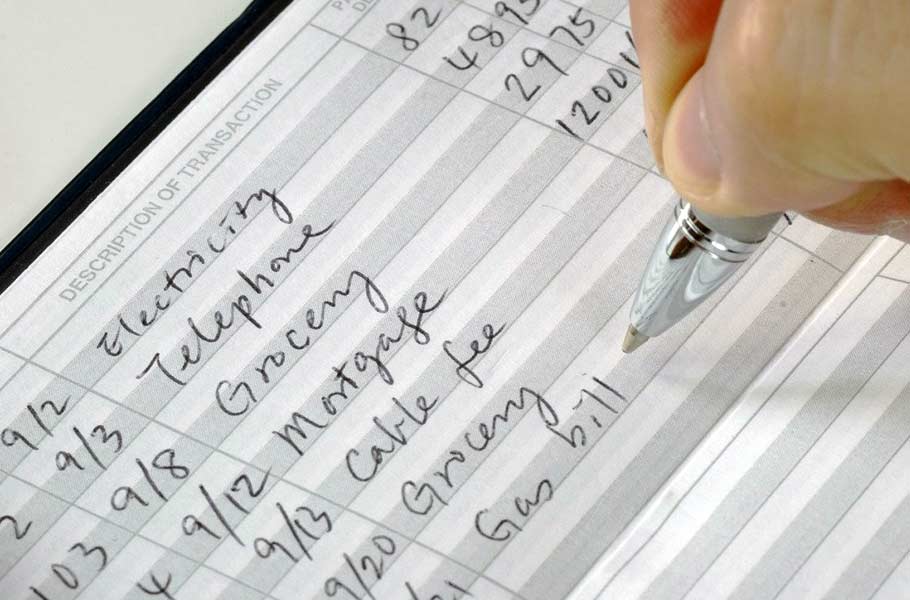Your checking account is your financial base camp. It’s where your paychecks land and your bills get paid. But how much should you actually keep in it?

Too little, and you risk overdraft fees. Too much, and your money sits idle instead of working for you. The sweet spot depends on your expenses, your income, and how you manage your money. Here’s how to figure out the right balance.
Key Takeaways
- Keep enough in your checking account to cover monthly expenses and a small buffer for unexpected costs. This helps avoid missed payments and overdraft fees.
- Factor in income stability and spending habits when setting your balance. A steady income allows for leaner balances, while variable income may require more padding.
- Do not let extra money sit in checking. Move surplus funds to high-yield savings or investment accounts where they can grow. Review your balance regularly and adjust as needed.
Here’s How to Find Your Ideal Checking Account Balance
The right checking account balance covers your regular expenses, gives you a cushion for unexpected costs, and helps you avoid fees—without leaving too much cash sitting idle.
Start With Your Monthly Expenses
Start by figuring out how much you spend each month on bills and everyday spending. That includes fixed expenses like rent or mortgage payments, utilities, insurance, and subscriptions. Then add variable expenses like groceries, gas, and anything else you spend money on regularly.
Don’t forget about occasional or seasonal costs—things like annual membership fees or holiday spending. Your checking account should have enough to cover all of this without cutting it close.
Add a Cushion for the Unexpected
Once you’ve calculated your average monthly expenses, add a buffer. A good rule of thumb is to keep one extra month’s worth of expenses in your checking account. This gives you a cushion for any unexpected bills, like car repairs or a medical co-pay.
Keep your full emergency fund—typically three to six months of expenses—in a high-yield savings account where it can earn interest. But having one month’s worth readily accessible in checking helps you cover surprise costs without tapping into long-term savings.
Adjust Based on Your Income Stability
If your income is steady and predictable, you may not need more than one or two months of expenses in your checking account. But if your income is inconsistent—because you freelance, work on commission, or run a seasonal business—it’s smart to keep a larger balance on hand.
More uncertainty means you’ll want more cushion to cover slower months without stress.
Watch for Minimum Balance Requirements
Some banks charge fees if your balance dips below a certain level. Know your bank’s minimum balance rules, and make sure your account stays above that threshold.
If you’re close to the limit, consider switching to a no-fee checking account or setting up alerts so you don’t get hit with charges.
Why You Shouldn’t Keep Too Much in Checking
It’s tempting to leave extra money in your checking account “just in case.” But holding onto too much cash there could slow your financial progress.
It Slows Your Money Down
Money in a checking account typically earns little or no interest. That means every extra dollar sitting there is a missed opportunity. You could be earning far more in a high-yield savings account, money market account, or even by investing.
Think of your checking account as a short-term tool, not long-term storage.
It Can Make Overspending Easier
Seeing a big number in your checking account can give you a false sense of security. You might spend more freely just because it feels like you have plenty of money. That can lead to impulse purchases and less disciplined budgeting.
A leaner checking account balance helps you stay focused on what’s truly necessary.
It Increases Fraud Risk
Your checking account is used for frequent transactions—debit card purchases, ATM withdrawals, and bill payments. That makes it more exposed to theft or fraud than a savings or investment account.
Keeping only what you need in checking helps limit potential losses if someone gains unauthorized access to your account.
How to Manage Your Checking Account Smarter
Your checking account works best when it’s running on autopilot with a few smart habits in place. These simple strategies can help you stay on top of your money without constant guesswork.
Use Budgeting Tools to Track Spending
Apps like Monarch and Quicken Simplifi, or your bank’s built-in tools can make budgeting easier. They show where your money goes each month and help you stay within limits. Knowing your spending patterns helps you set the right checking account balance.
Set Up Automatic Transfers to Savings
Once your main bills are paid, set up automatic transfers to move extra money to savings. This keeps your checking balance lean and helps you build savings without thinking about it.
Just make sure the timing works with your income so you don’t accidentally overdraw your account.
Split Direct Deposits Across Accounts
Many employers let you split your direct deposits between multiple accounts. You can send just what you need to checking and have the rest go directly into savings or investments.
This takes the temptation out of spending money that should be working for you elsewhere.
Review and Adjust Every Few Months
Life changes—so should your account strategy. If your income, expenses, or financial goals shift, take a few minutes to update your plan. A quick review every quarter is usually enough to keep things on track.
Where to Put Extra Money Instead
If your checking account consistently runs high, move that extra cash where it can grow. Here are a few smart places to park surplus funds.
High-Yield Savings Accounts
A high-yield savings account offers better interest than checking and keeps your money easily accessible. It’s a great spot for short-term savings or part of your emergency fund.
Money Market Accounts
Money market accounts combine features of savings and checking, with higher interest and limited check-writing access. They’re ideal for medium-term savings that you might need to tap occasionally.
Brokerage or Investment Accounts
If your emergency fund is in place, and you have money you won’t need for a while, consider investing. A brokerage account allows you to buy stocks, ETFs, and other assets that can grow over time.
Bottom Line
Your checking account should be a tool, not a parking lot. Aim to keep one to two months of expenses on hand, plus a small buffer. Move the rest to savings or investments so your money works harder for you.
The goal is balance—enough to cover your bills, not so much that your cash sits still.
Frequently Asked Questions
Is my money safe in a checking account?
Yes. Most checking accounts are insured by the Federal Deposit Insurance Corporation (FDIC) for up to $250,000 per depositor, per bank. This protects your money in the unlikely event your bank fails. Just make sure your bank is FDIC-insured.
How can I avoid monthly maintenance fees on my checking account?
You can usually avoid maintenance fees by meeting your bank’s minimum balance requirement, setting up direct deposit, or using your debit card a certain number of times each month. Check your bank’s specific rules so you know exactly what’s required.
Can I use a credit card instead of keeping a lot of money in my checking account?
Yes. If you use a credit card for everyday purchases and pay it off in full each month, you can keep less money in checking and move more to savings. This strategy works well if you stay disciplined and avoid interest charges or fees.
What happens if my checking account balance goes negative?
If your balance drops below zero, your bank may charge overdraft fees for each transaction. These fees can add up quickly. Some banks offer overdraft protection, but this can also come with costs. Keeping a small buffer in your account helps avoid these charges.
Should I link my checking account to my savings account?
Linking your accounts can make transfers easier and help cover overdrafts automatically. Just be sure your bank doesn’t charge a fee for transfers or overdraft protection. It’s a simple way to manage your money more efficiently and reduce the risk of accidental overspending.



